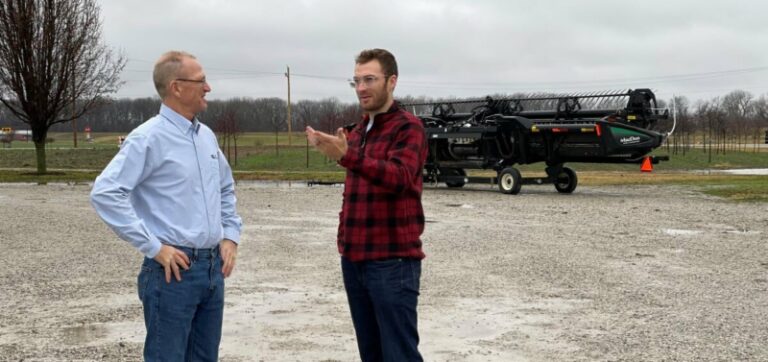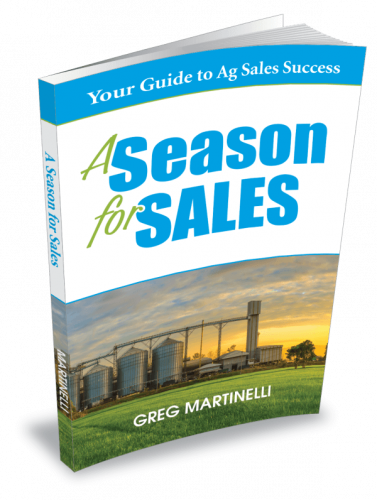3 Tips for those that sell complicated or invisible products
Do you sell a highly technical product? One that is difficult to explain? Like a biological soil product, a pre-biotic for dairy cattle, or option strategies for grain marketing. Maybe you sell crop insurance. Sounds simple till you get neck deep in the details.
Do you sell an invisible product? Like yeast, probiotics, soil additives, or micro-nutrients. Many of our products are very powerful, but can’t actually be seen. We cannot look at a pile of yeast powder and count colony forming units. It could be a pile of sawdust for all we know.
Do you sell a product that works perfectly and yields ROI in a test lab or test plot situation, but then becomes difficult to show in the real-world use? Farming is an outdoor sport that changes from season to season and certainly year to year. Rainy one year, drought the next, to perfect conditions the next. Fungicides work great but mostly in the right weather conditions. I say that but I have no real proof of my own. Was it the fungicide that worked for that customer or was it just the environment this growing year?
Salespeople face this challenge every day. The old tried and true products are highly commoditized. NPK for fertilizer sales, a high by-pass fat diet in a dairy cow, a cash grain bid. Those are all very common or commoditized. So, we continue to innovate our product offering to customers. We want to sell value-added products. That added value means more margin, which means keeping our doors open. However, those value-added products are often difficult to explain. The responsibility of explaining it falls to the salesperson.
What to do:
#1: Make it simple: We love to explain the detailed technology in our products in some of the most complicated ways. I contend we wear complexity on our sleeve as a badge of honor. Some salespeople do it in hopes of impressing their customers with their expertise. Some do it because they are regurgitating the marketing material their company provides.
Here’s my advice: Stop it! Your customer is not impressed. They are confused or lost. As soon as they no longer understand the nucleic acid derivative that crosses the membrane walls during nutrient absorption, they check out mentally. Often, they assume this is too technical to understand so it might be made up technology.
Instead:
- explain in simple terms.
- Use very easy analogies to show how your product works.
- Kill your 10 syllable scientific terms and make them easy to remember.
- The same goes for acronyms that don’t mean anything to customers.
#2. Make it visible: Whatever product you sell can easily be explained by turning it into a familiar visible model. I mentioned counting yeast colony forming units. That’s the standard measure of how much yeast is in a product. I sold yeast for many years in my products and still don’t know how to explain it. I Googled it just now and sort of but mostly don’t understand it. However, I might better understand if someone explained that it’s like a bundle of grapes on a vine. Each stem with 10-15 grapes is a colony and you need a billion of those colonies in the diet each day to make a difference. Forgive me all those that sell yeast if I got it wrong.
#3: Send the message through a Trusted Advisor: Hopefully, that is your sales team. When faced with a new product or new technology, customers want to hear it from someone they trust. They don’t really believe all the marketing or brand messages that come from the main office. Not to say we don’t need them. It’s that customers are overloaded with marketing material that claims to be the best product on the market. I saw a recent internet statistic that 84% of brand messages are not believed. That sounds really high until you look at it through your customer’s eyes. Every day, they get marketing material from several seed companies, several new carbon initiatives, a couple of equipment manufacturers, and a few Ag finance services. That’s just in the mail. I didn’t mention the emails or radio advertisements they get. All of them proclaiming to be the best.
Your customer sorts through the noise as best they can and then asks someone they trust to help them decide. That might be you as their salesperson. Might be someone in your company. Often, I see agronomy managers as the trusted resource. Might be someone in the public arena like a university professor or someone who writes and speaks on a subject. In the grain trading world, there are several in this category. The trusted advisor might be more local like their vet or an independent agronomist.
Whoever your customers trust, that’s who you need to get on board with understanding your technology and able to explain it. Spend the extra time to train them on it: meetings, free trials, facility tours, sample products for them, etc. That should be your first sale as a salesperson.
Why am I telling all this to an audience of salespeople? Because the burden of explaining this invisible complicated product falls on your shoulders. I know you want to use your company App. I know you want to pull out charts and graphs and data. But think about your customer. Every company has those same types of Apps and charts. It’s up to you to be that Trusted Advisor.
In a sea of me-too products, your customer is screaming, “That all sounds good, but which product is best for me, on my farm or for my agribusiness?”
The trust you have built up will allow you to answer that question for your customer – in their best interest.
And that is the greatest reward of selling!


